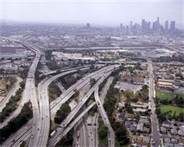Americans Sat in Over 1.4 Million Miles of Traffic During Their Afternoon Commute in 2014
 |
TomTom helps commuters spend more time with their loved ones by 'getting home faster'
BURLINGTON, MA -- Jan. 6, 2015: Traffic experts at TomTom (TOM2), who use more than 400 million traffic data sources, including community and professional input from fleet telematics, PNDs, and in-dash systems, today revealed that commuters sat in enough traffic during their afternoon commute in 2014[1] to travel to the moon and back 2.5 times. In 2015, TomTom vows to help commuters spend more time with their loved ones by giving them the gift of time.
"At TomTom, we know that one of the biggest luxuries today is time and there are many more things that people would rather do than sit in traffic," says Jocelyn Vigreux, President of TomTom USA. "Fifty percent of Americans listed 'Spending More Time with Family' as their number one New Year's resolution[2] last year, and TomTom can help keep that New Year's resolution by spending less time on the road and more time with loved ones."
As millions of people set their New Year's resolutions, here are some easy tips to consider to help you keep "traffic resolutions" this year:
Leave on the half-hour – People love to hit the road on the hour, so aim to head home on the half-hour to avoid the waves of people leaving at 4:00 p.m., 5:00 p.m. and 6:00 p.m. on the dot. Know peak traffic times and avoid them – Across the country, commuters who leave prior to 3:45 p.m. or after 5:15 p.m. can save themselves precious time by getting ahead, or behind, of the peak traffic times. Use a personal navigation device with real-time traffic – Real-time traffic, like the one used in all TomTom GO devices, has turned these handy guidance tools into traffic-avoiding superstars. It's no longer about how to get to an unknown destination, but how to get places faster. [1] Calculated by the average miles sitting in traffic between 5:00 p.m.-6:00 p.m. multiplied by 240 work days [2] According to studies done by Nutrition Centers, Quicken, and others in 2013/2014
Traffic experts at TomTom also took a closer look at specific commutes in four major cities:
New York: Those traveling from Manhattan to Hempstead should avoid leaving on the hour, for example at 4:00 p.m. or 5:00 p.m. Leaving at 5:30 p.m. or 5:45 p.m. can save at least 25 minutes of travel time (the hour long commute turns into more than two hours on the road if you leave at 5:00 p.m.). Washington, D.C.: 5:00 p.m. is the worst time to hit the road citywide. Commuters leaving Downtown D.C. for Rockville can save 10 minutes on the road if they leave at 4:45 p.m. Atlanta: The roads are gridlocked between 4:30 p.m. and 6:00 p.m. heading out of the city on I-85 towards Doraville and beyond, so if people can't hit the road at 4:15 p.m., don't bother until after 6:00 p.m. to avoid traffic jams. Boston: Commuters leaving the city for the South Shore can save 15-30 minutes on their daily commute if they leave before 4:15 p.m. Leaving after this adds more than 30 minutes to your commute, so if people can't make that deadline, hold off until 6:30 p.m. which is when the roads typically start clearing up. For more information on TomTom's traffic data or personal navigation devices, visit TomTom.com
The Power of TomTom Traffic
TomTom is a pioneer and innovator in collecting, processing and reporting traffic information based on probe data. TomTom has been collecting probe data since 2007 and maintains a historical database that exceeds 9 trillion data points and grows by 9 billion points every day. Our data expertise helps ensure the best quality data fusion and output as probe sources change and evolve over time.
TomTom generates real-time traffic data by combining measurements of existing infrastructure with signals from anonymous TomTom (connected) GPS devices, fleet telematics and anonymous GPS equipped smartphones. Our historical traffic data is used as a background source as well as a validation database for ground-truth data quality benchmarking. TomTom fuses these different data sources into our own traffic fusion process. By using TomTom Traffic Flow, real-time speeds and travel times can be delivered for the entire road network.


